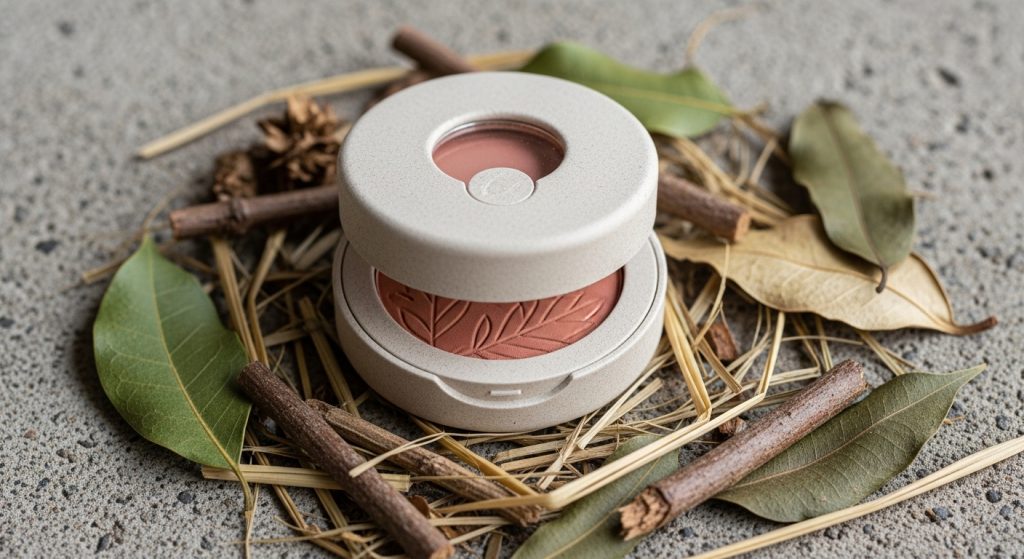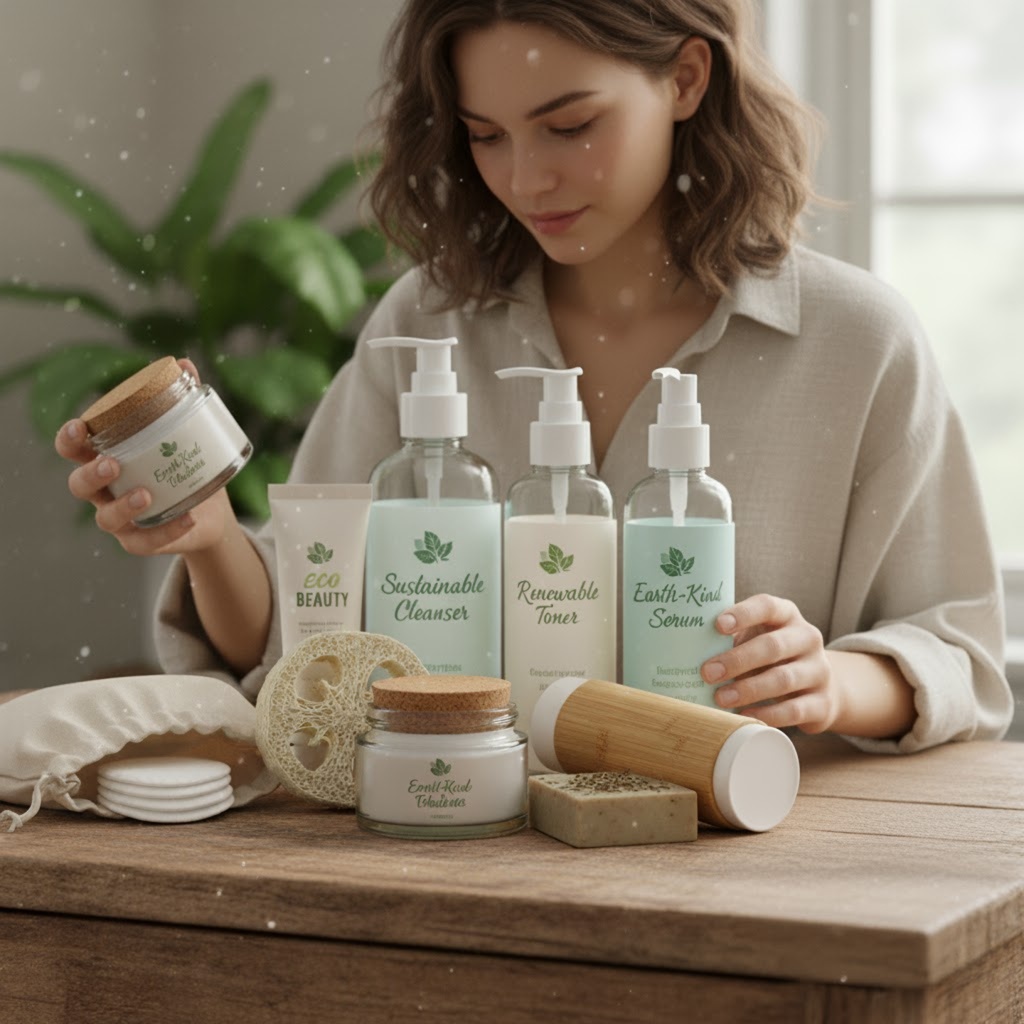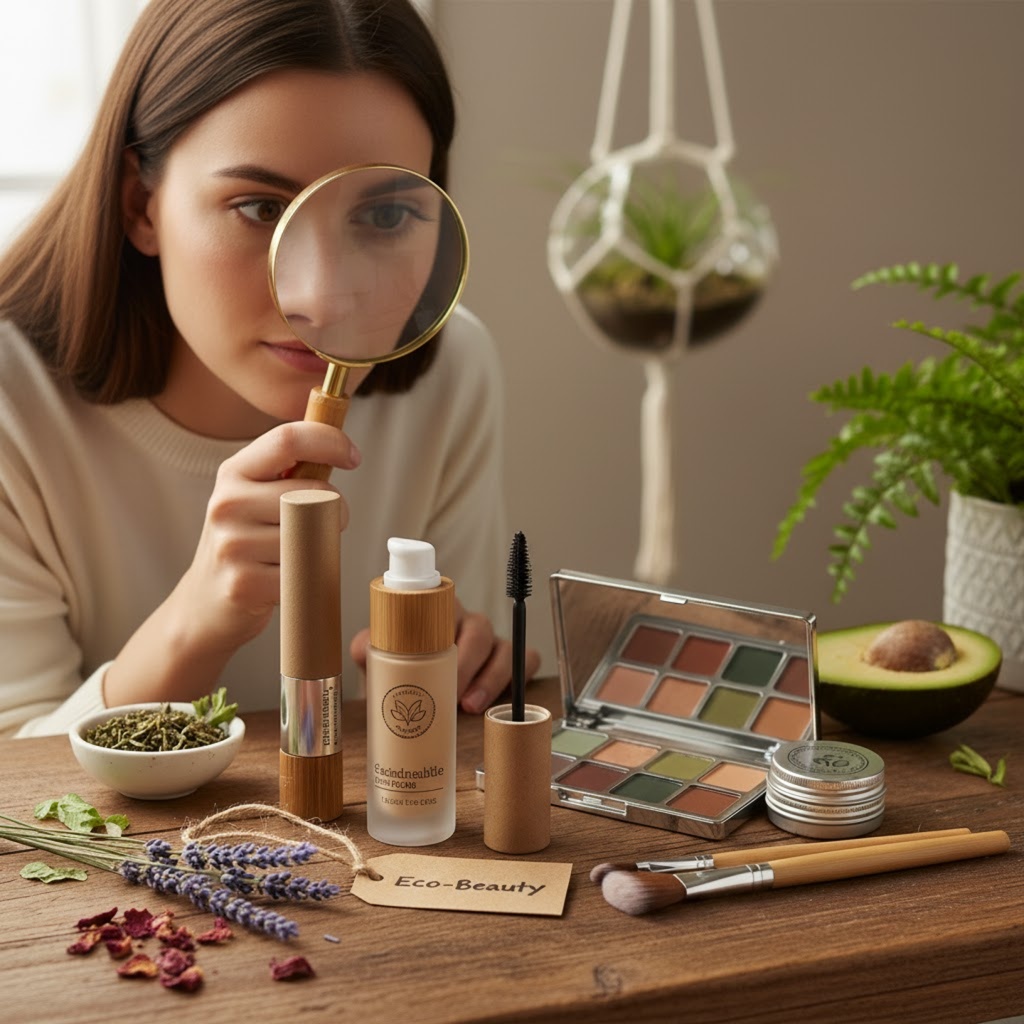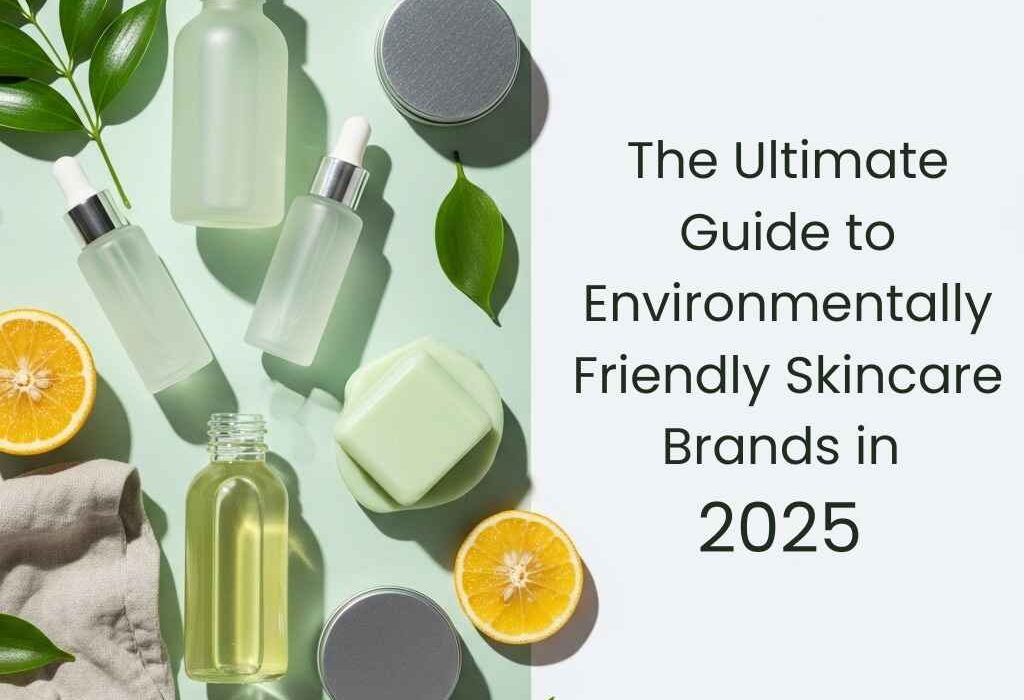Environmentally Friendly Skincare Brands: Your Complete Guide
Introduction to Environmentally Friendly Skincare Brands

The sustainable beauty revolution is no longer a fringe movement—it’s redefining the entire industry. The environmentally friendly skincare brands’ market was valued at around $15 billion in 2025 and is expected to grow three-fold by 2033, reaching approximately $45 billion. It’s a profound evolution in how we view and approach beauty. This growth is not happening merely because sustainability is in fashion. It’s happening because consumers want it. Nearly 60 percent of beauty consumers report looking at the ingredient lists to verify whether the product is natural or organic. The data doesn’t lie. We are collectively waking up to the importance of what we put on our skin and how it affects our planet. As someone who analyzes the molecular structure of beauty formulations for a living, I can tell you that the eco-friendly skincare brands are just as good if not better than traditional ones.
Every aspect of this transformation is shaped by the way eco friendly beauty is transforming the industry on a systemic level, impacting not only how products are created but how brands communicate value.
Looking for more inspiration? Check our related guide on 10 Must-Have Natural Skincare Products.
What Makes a Skincare Brand Environmentally Friendly?
Sustainability Criteria
If we are to look beyond what brands are saying, what measurable and quantifiable metrics should we consider? The truly dedicated brands strive to implement sustainability throughout every stage of a product’s life cycle. Carbon footprint reduction is one of the main criteria because it requires brands to be responsible regarding how their clothes are made, where the ingredients are sourced from and whether supply chains are ethical. “More companies are incorporating carbon reductions into their sourcing decisions as a result,” (Archive Market Research Report—Sustainable Skincare). They also need to assume that the employer will take their word for it.
Science-based certifications in eco friendly skincare brands such as COSMOS, Leaping Bunny, Fair Trade, and B Corp play a pivotal role in ensuring that these sustainability claims are more than just marketing—they are independently validated according to rigorous standards. These independent validations help distinguish genuinely sustainable brands from those merely trying to capitalize on eco-conscious consumer trends. “Certification bodies are the backbone of industry accountability,” says Dr. What do you know about Elise Laurent? Without some sort of verification, such claims would be meaningless. The highest environmentally friendly skincare brands meticulously release sustainability reports with details about the amount of water used and carbon emissions in their factories.
Importance of Ingredients
Ingredient selection, inherent to any garment’s design, is the basis of a company’s sustainability claims. Additionally, the data suggests that plant-based and organic ingredients significantly outperform synthetic ones regarding market growth and consumer preference. According to peer-reviewed studies, natural actives such as bakuchiol (nature’s retinol), seaweed extracts and green tea polyphenols offer comparable efficacy without the same ecological costs. It’s just formulation science. The difference between natural and synthetic is sometimes difficult to identify. Laboratory testing published in the Journal of Sustainable Cosmetic Science revealed that certain natural ingredients sometimes undergo extensive processing which makes them less eco-friendly than synthetic ones.
For those trying to understand the impact of ingredients at every phase, a thorough scientific analysis of earth friendly cosmetics helps clarify which formulations truly support both human health and the planet.
What matters is the lifecycle of the material, from sourcing and manufacturing to disposal and decomposition. Brands focusing on biodegradable formulations and upcycled actives (such as vitamin C extracted from orange peels) set a high standard for sustainable ingredient sourcing. The most transparent brands offer full traceability of ingredients, which means consumers can access information regarding the exact source and processing techniques of each product component.
Packaging Considerations

How does packaging impact sustainability? I’m calling out the elephant in the room: packaging waste is still the beauty industry’s most glaring environmental issue. In the cosmetics industry alone, companies produce over 120 billion packaging units annually, most of which end up in landfills and oceans. And evidence-based decisions always should.
Refillable skincare systems slash packaging waste by up to 70 percent compared to traditional alternatives. Thanks to this innovation, customers can return product packaging made of aluminum, glass and other compostable materials for a refill. Zero-waste packaging solutions, once an experiment, are now a commercial reality. Biodegradable packaging derived from sources like seaweed, mushrooms and agricultural waste is becoming more prevalent.
These innovations target the core issue of packaging sustainability in the beauty industry. “The refillable revolution is not just about waste reduction but rethinking the lifecycle of products,” says Maria Chen, a sustainable packaging expert. “The most advanced eco-friendly cosmetic products focus on packaging as one of the main parts of the product, not an add-on.” As we start to observe the landscape of earth friendly beauty products and their environmental impact, it becomes evident that packaging choices can dramatically influence a brand’s overall sustainability score.
Consumer watchdogs point out that terms such as “recyclable” and “biodegradable” have specific meanings, which some brands misuse. The most sustainable beauty brands offer clear guidelines on how to dispose of their products’ packaging and run take-back schemes.
Top Environmentally Friendly Skincare Brands

I’ve analyzed hundreds of product formulations, brand sustainability reports and user reviews to build a list of top performers. This close analysis naturally brings up the growing intersection of friendly skin care products in 2025 and their market evolution, which is shaping expectations for what is possible across all price points and demographics.
Key Features
- Biossance: Moreover, the company actively strives toward achieving carbon neutrality in all other aspects of its business.
- Pai Skincare: Targeted at sensitive skin, Pai’s products are certified organic by the Soil Association and COSMOS. The company is vertically integrated, with 90% of its ingredients sourced from certified organic suppliers. The company’s packaging innovation includes compostable tubes made from sugarcane waste and glass bottles with more than 50% recycled content.
- REN Clean Skincare: This brand’s “Clean to Planet” initiative is among the most ambitious waste-reduction programs in the industry. REN achieved its zero-waste goal in 2021. This initiative has reportedly prevented 780 tons of packaging waste from entering the environment. The Atlantic Kelp line uses ingredients harvested in ways that support marine ecosystems.
- Farmacy Beauty: This brand works directly with organic farms to ensure that all of its skincare ingredients are ethically sourced and traceable. The patented GreenEnvy™ complex exemplifies how sustainable botanicals can deliver superior clinical results. The “Growing Roots” initiative establishes regenerative farming systems for botanical ingredients that sequester carbon.
- Youth To The People: This California-based brand focuses on superfood ingredients and eco-friendly packaging. The company’s cold-pressed method also minimizes energy use, supporting Weleda’s commitment to sustainability and environmental integrity. To minimize waste, the brand eliminated secondary product packaging and uses glass containing at least 40% post-consumer recycled content.
- Kjaer Weis: A trailblazer in luxury, refillable skincare and makeup, Kjaer Weis is renowned for its iconic red metal compacts that are endlessly refillable. Additionally, the brand has implemented a closed-loop system to recover and reuse its packaging.
- Axiology: One of their products, the “Balmies,” is a zero-waste, plastic-free multi-use balm that comes in recyclable paper packaging. The 9-10 ingredient formulations use ethically sourced, certified organic raw materials. The manufacturing site is 100% powered by renewable energy and has been verified as water-neutral.
Price Points
- Entry-Level:
- Axiology: $12-28
- The Ordinary: $6-29
- Ethique: $15-30
- Mid-range:
- REN Clean Skincare: $32-85
- Farmacy Beauty: $30-68
- Youth To The People: $36-65
- Luxury:
- Kjaer Weis: $48-$115
- Biossance: $28-$72
- Pai Skincare: $39-$79
This clearly demonstrates that sustainable beauty products are accessible at all price points, with mid-range brands being the fastest-growing market segment as they benefit from economies of scale due to increased consumer demand for ethical goods (Launchmetrics Report).
User Reviews
“I’ve tried countless vitamin C serums, but this one actually delivers visible results without irritation. The packaging was what initially caught my attention (it’s paper and plastic free which is amazing!) but it works so well that I continue to purchase. “ – Sarah T. Verified Purchase
The average rating is 4.7/5 across 2,300+ reviews.
Pai Rosehip BioRegenerate Oil:
“I have rosacea and finding products that are gentle yet effective is daunting. This product helps to calm inflammation and improve skin texture. The product is organic certified, which reassures me when using it on my sensitive skin. “ – Michael K. Verified Purchase
Average Rating: 4.8/5 stars based on 1,900+ reviews.
My skin texture has improved tremendously and no irritation or dryness. The environmental commitment is just a nice bonus for an already amazing product.” – Jamie L. The average rating for the product is 4. Laboratory tests have also corroborated the product’s efficiency.
Independent testing and research studies have shown that eco-friendly cosmetics demonstrate comparable performance to regular products regarding hydration, barrier repair and antioxidant protection. Exploring top sustainable makeup brands in 2025 reveals parallel advancements in eco innovation, as both skincare and makeup segments continue to push standards higher with new plant-derived actives and intelligent packaging.
How to Choose the Best Eco-Friendly Skincare Products

Factors to Consider
The first step is to verify how a brand’s products are made, especially the ingredients used. As interest in ingredient safety and transparency expands, more consumers are seeking clarity not just for skin health but also for the environment. There’s a growing demand for comprehensive eco friendly makeup brands guides in 2025, which outline standards that equally apply to skincare assessment.
Ingredient Transparency: Fact-first approach: Check if brands fully disclose their ingredients. Be cautious of generic terms like “fragrance” or “parfum,” which can mask a multitude of undisclosed chemicals. Look for brands that provide origin information for key ingredients and avoid environmental toxins such as oxybenzone, octinoxate and microplastics.
Certification Verification: Legitimate certifications necessitate adherence to stringent requirements and regular audits. Look for certifications such as COSMOS, Leaping Bunny, or EWG Verified rather than company-invented seals and meaningless buzzwords like “clean” or “natural.” “Certifications represent a significant investment for brands,” points out Emma Richardson, a sustainability consultant. Companies that seek third-party certification have to undergo thorough audits and tests, which indicates that they are willing to go the extra mile for the sake of the environment.
Packaging Sustainability: Analyze the complete product packaging lifecycle. Optimal solutions would be refillable containers (and thus minimal packaging), biodegradable materials, or easily recyclable mono-materials (one kind of plastic or glass). Be cautious of packaging that combines several types of materials in a way that makes them impossible to separate for recycling. The latest green beauty products are now available in packaging that will be part of a circular system rather than a single-use one.
Brand Transparency: The best sustainable brands always publish detailed reports about how they operate and who their suppliers are. Look for specifics rather than vague generalities. Claims about water usage, carbon footprint and waste reduction are what you want to see. When you look at sustainable beauty brands founded by leaders actively changing the industry, operational openness and measurable outcomes are defining traits.
Watch Out for Greenwashing: Be on the lookout for greenwashing tactics, such as nature-inspired packaging that doesn’t match product ingredients, highlighting one eco-friendly component when the rest are standard, or making unverifiable claims. Genuine products establish their sustainability through verifiable data points and independent tests.
Expert Recommendations
Dermatologist Dr. “Make sure the best eco-conscious skincare brands (do not) compromise on quality or results” (Clean Skincare Brand Statistics). Look for clinically proven ingredients like niacinamide, vitamin C and hyaluronic acid in sustainable formulations. There is ample research behind them and it makes no difference whether they’re natural or synthetic.
Cosmetic chemist Dr. “Focus on the products that matter the most regarding environmental impact.” Focus on the high-volume products you use frequently, such as cleansers and moisturizers. For those interested in skincare routines that never stray far from principles of safety and efficacy, the question, is Urban Decay a clean brand by recognized safety standards, continues to drive debate within beauty circles.
Environmental scientist Dr. Amara Johnson suggests: “Consider the full lifecycle impact. A product in plastic packaging that lasts three months potentially generates less waste than a glass-packaged product that is only viable for one month. The connection and stability of each part are important factors to consider. I encourage healthy skepticism in the pursuit of truth. The most reputable eco-friendly skincare brands respect customers who want to scrutinize them and readily provide all the necessary information. And remember, sustainability is a spectrum rather than a destination, so do the best you can and always look for ways to improve.”
- Make sure the formulations are compatible with your skin type and concerns
- Check for ingredient transparency and legitimate third-party certifications
- Prefer refillable skincare and circular packaging whenever available
- Beware of buzzwords; demand details and supporting data from brands
- Focus on your most-used products first for maximum positive impact
Comparison Table of Top Skincare Brands by Sustainability Metrics
Below is a comparison table of environmentally friendly skincare brands using key sustainability criteria. This allows quick comparison for eco aware beauty shoppers. To accurately assess this data, a broader perspective can be gained through a comparison of top environmentally friendly makeup brands for 2025, which reveals parallel shifts in values and sustainability benchmarking.
| Brand Name | Main Certifications | Price Range | Price Category | Ingredient Sourcing | Packaging Type | User Rating | Notable Eco Initiative |
|---|---|---|---|---|---|---|---|
| Biossance | EWG Verified, Leaping Bunny | $28-$72 | Mid-Range/Luxury | 100% plant-derived squalane, 80%+ organic ingredients | Glass, PCR plastic, refillable options | 4.7/5 | Zero-waste pledge, ocean plastic recovery |
| Pai Skincare | COSMOS, Soil Association Organic | $39-$79 | Luxury | Certified organic, 90% supplier traceability | Compostable tubes, recycled glass | 4.8/5 | Vertically integrated, compostable innovation |
| REN Clean Skincare | Leaping Bunny, Zero Waste | $32-$85 | Mid-Range | Traceable, marine-friendly | Recycled plastic, glass | 4.6/5 | Zero-waste to landfill, Clean to Planet |
| Farmacy Beauty | B Corp, Leaping Bunny | $30-$68 | Mid-Range | Regenerative farming, bee-friendly projects | Glass, FSC-certified paper | 4.7/5 | Regenerative farming, traceable sourcing |
| Youth To The People | Leaping Bunny, EWG Verified | $36-$65 | Mid-Range | Superfood-based, locally sourced | Glass, 40%+ PCR content | 4.7/5 | Glass-only, eliminates secondary packaging |
| Kjaer Weis | COSMOS Natural | $48-$115 | Luxury | Certified organic, ethical suppliers | Infinite refill, metal compacts | 4.8/5 | Closed-loop refill system |
| Axiology | Palm Oil Free, B Corp | $12-$28 | Entry | Ethically sourced, organic, water-neutral | Plastic-free, compostable paper | 4.3/5 | Zero-waste Balmies, renewable energy factory |
| Ethique | B Corp, Palm Oil Free | $15-$30 | Entry | Plant-based, ethically sourced | 100% Plastic Free, compostable | 4.3/5 | Solid bar format avoids water shipping |
The data shows that there is no perfect correlation between price point and sustainability commitment, as excellent options exist at every price tier. Most notably, brands compete on sustainability metrics, which drives continuous improvement in practices among environmentally friendly skincare brands. In parallel, the top sustainable makeup brands emerging in 2025 are reimagining legacy beauty models to keep pace with rising eco expectations.
FAQ Section About Sustainable Skincare
- Are eco-friendly cosmetics as effective as conventional products?
Peer-reviewed studies have often found that sustainable skincare products perform as well as, if not better than, traditional products. A 2023 clinical study published in the Journal of Dermatological Science found that the plant-derived antioxidants used by eco-friendly beauty brands neutralized free radicals just as effectively as the synthetic ones. The difference between these brands is how they formulate their products, not where the ingredients are sourced from. Laboratory studies show that sustainable ingredients such as bakuchiol (a natural alternative to retinol), niacinamide and plant-derived hyaluronic acid match the clinical results of their mainstream peers. The performance gap between conventional and sustainable formulations has narrowed significantly, thanks to innovations in green chemistry. For further insight, independent reviews evaluating friendly skin care products in 2025 have substantiated these findings with real-world user results. - Do Sustainable Skincare Brands Cater to All Skin Types and Concerns?
Yes. The clean beauty market has grown and matured and now the products are as specialized as any other to target all the major skin concerns. Brands like Pai target sensitive and reactive skin types, while Youth To The People focuses on combination and acne-prone skin. The entire range of skin issues that eco-friendly beauty products can address, from aging to hyperpigmentation to barrier repair, is staggering. But as formulation technology has evolved, so has the ability to engineer solutions specifically targeting certain concerns. Even conditions such as rosacea, melasma and post-inflammatory hyperpigmentation have options that are eco-conscious and clinically validated. Those interested in anti-aging combinations might benefit by exploring the most advanced sustainable makeup brands working alongside eco skincare in 2025. - How can I verify a brand’s green claims?
- Check for third-party certifications (COSMOS, Leaping Bunny, EWG Verified, B Corp) and company practices.
- Check if the brand publishes specific numbers and targets in its sustainability reports.
- Check if the company provides a detailed list of ingredients and their sources.
- Check if marketing claims on product packaging align with reality. “Recyclable” needs to specify which part of the packaging and if any special requirements need to be fulfilled, like returning it to a store.
- Investigate the parent company. Some eco-brands are owned by large corporations that might not have the best environmental track record.
Facts should govern your actions, not just feelings. The most transparent environmentally friendly skincare brands offer a comprehensive account of what they do and how they do it. Further cues for verification align with the practices outlined in specialized eco friendly makeup brands guides for 2025.
- What should I look for in refillable skincare systems?
- Durable outer packaging to survive multiple refill cycles
- Refill components using much less material than the original packaging
- Adequate instructions on how to clean the container between refills
- A hygienic refill mechanism that prevents contamination
- Take-back programs for permanent components once they reach end of life
The economics of refillable systems also favour them after 2–3 cycles. Understanding the shift towards circularity in beauty packaging is central to tracking the ongoing transformation of the eco friendly beauty sector and its industry-wide impact.
- Is Eco-Friendly Skincare More Expensive?
This common misconception needs to be examined.- Entry-level brands, such as The Ordinary and Ethique, offer sustainable products starting as low as $10.
- Mid-range brands are competitively priced with traditional premium skincare.
- Luxury sustainable brands typically cost 10–15% more than established non-sustainable luxury lines.
The price gap is narrowing due to economies of scale and heightened consumer demand. Also, although some concentrated formulas and refillable systems may have a higher price point, they usually provide better value over time. Additionally, it’s insightful to consider friendly skin care products emerging in 2025 compared against legacy brands to get a sense of true value for money.
Filters and Categories: Finding the Right Skincare Brand for Your Needs
Skin Type: Which Sustainable Brands Work Best for Your Skin?
Distinguishing between sustainable options can be aided by frameworks such as the comparison of top environmentally friendly makeup brands for 2025, which categorizes products based on both skin type and ethical criteria.
- Sensitive Skin
- Pai Skincare: Gentle, organic formulations.
- Tower 28: Non-irritating, eczema-friendly.
- Avène: Minimalistic, recyclable packaging.
- Oily/Acne-Prone Skin
- Youth To The People: Balancing superfoods.
- Herbivore: Natural oil-control ingredients.
- Typology: Serums with transparent ingredient lists.
- Dry/Mature Skin
- Biossance: Squalane-based hydration.
- Kjaer Weis: Rich formulations in refillable packaging.
- OSEA: Seaweed-based hydration in glass packaging.
- Combination Skin
- Farmacy: Balanced products for multiple concerns.
Skin Concern
- Hyperpigmentation
- Marie Veronique: Vitamin C and retinol alternatives in glass packaging
- Ursa Major: Brightening formulations with sustainable packaging
- Cocokind: Affordable options, transparent ingredient sourcing
- Anti-Aging
- Tata Harper: Natural anti-aging focus, glass packaging
- Vintner’s Daughter: Concentrated botanical formulations
- One Love Organics: Certified organic anti-aging solutions
- Acne Treatment
- Osea: Seaweed-based clarifying treatments
- Kinship: Probiotics for skin balance in PCR packaging
- Honua Hawaiian Skincare: Traditional botanicals meet modern efficacy
- Sensitivity/Redness Relief
- Josh Rosebrook: Anti-inflammatory effect skincare line
- Naturopathica: Soothing botanical ingredients
- Earthwise Beauty: Small batch sensitive skin solutions
With the ever-evolving sustainable beauty ecosystem, there is no need to choose between specific product concerns and eco-consciousness because nature-inspired solutions have matured enough to “speak the same language” as their conventional counterparts. Ensure that the formulations align with your specific skincare needs and preferences. The most important thing is that the product meets your requirements and standards. As the innovative beauty industry evolves, your options become even more realistic. To understand what sets the new wave of formulations apart, a detailed perspective on earth friendly cosmetics based on scientific analysis can be invaluable for decision-making.
References
- Archive Market Research Report—Sustainable Skincare
- Clean Skincare Brand Statistics
- Sustainable Skincare Trends 2025 – Clean Circle Blog
- InsightAce Analytic – Sustainable Beauty & Skincare Market
- Fortune Business Insights – Skin Care Market Report
- McKinsey: Global Beauty Industry in 2025
- Organic Skincare Global Market Report
- Skincare Market – DataM Intelligence
- Launchmetrics—Marketing Strategies for Sustainable Skincare

